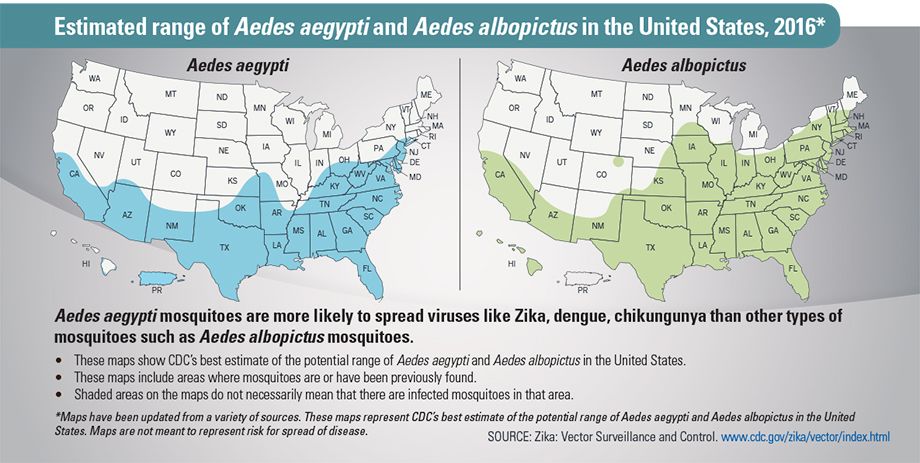ATLANTA — The Centers for Disease Control and Prevention and the Occupational Safety and Health Administration issued new guidance and information for employers and workers to protect against an occupational exposure to Zika virus.
The interim guidance is for health care and laboratory workers, mosquito control and other outdoor workers and business travelers to protect against occupational exposure to Zika virus. Health care workers, who may be exposed to contaminated blood or other potentially infectious materials from people infected with Zika virus, may require additional protection.

Photo courtesy of CDC.gov
Zika virus is primarily spread by infected mosquitoes, exposure to an infected person’s blood or other body fluids may also result in transmission. Although there are no reports of transmission of Zika virus from infected patients to health care personnel or other patients, minimizing exposure to body fluids is important to reduce the possibility of such transmission. Standard Precautions are recommended in all health care settings to protect both health care personnel and patients from infection with Zika virus as well as from bloodborne pathogens such as HIV and hepatitis C.
The specific CDC and OSHA guidance for health care and laboratory workers includes the following:
- Employers and workers in health care settings and laboratories should follow standard infection control and biosafety practices (including universal precautions) as appropriate, to prevent or minimize the risk of Zika virus transmission.
- Standard precautions include, but are not limited to, hand hygiene and the use of PPE to avoid direct contact with blood and other potentially infectious materials, including laboratory specimens/samples. PPE may include gloves, gowns, masks and eye protection.
- Hand hygiene consists of washing with soap and water or using alcohol-based hand rubs containing at least 60 percent alcohol. Soap and water are best for hands that are visibly soiled. Perform hand hygiene before and after any contact with a patient, after any contact with potentially infectious material, and before putting on and upon removing PPE, including gloves.
- Laboratories should ensure that their facilities and practices meet the appropriate Biosafety Level (BSL) for the type of work being conducted (including the specific biologic agents — in this case, Zika virus) in the laboratory.
- Employers should ensure that workers: Follow workplace standard operating procedures (e.g., workplace exposure control plans) and use the engineering controls and work practices available in the workplace to prevent exposure to blood or other potentially infectious materials.
- Employers should ensure workers do NOT bend, recap, or remove contaminated needles or other contaminated sharps. Properly dispose of these items in closable, puncture-resistant, leak-proof and labeled or color-coded containers. Workers should use sharps with engineered sharps injury protection (SESIP) to avoid sharps-related injuries.
Zika virus is primarily spread through the bites of infected mosquitoes. There is no vaccine to prevent Zika virus infection and there is no specific treatment for people who become infected.
CDC will continue to update this guidance as new information related to Zika virus transmission and related health effects becomes available, based on the accumulating evidence, expert opinion, and knowledge about the risk associated with other viral infections.











